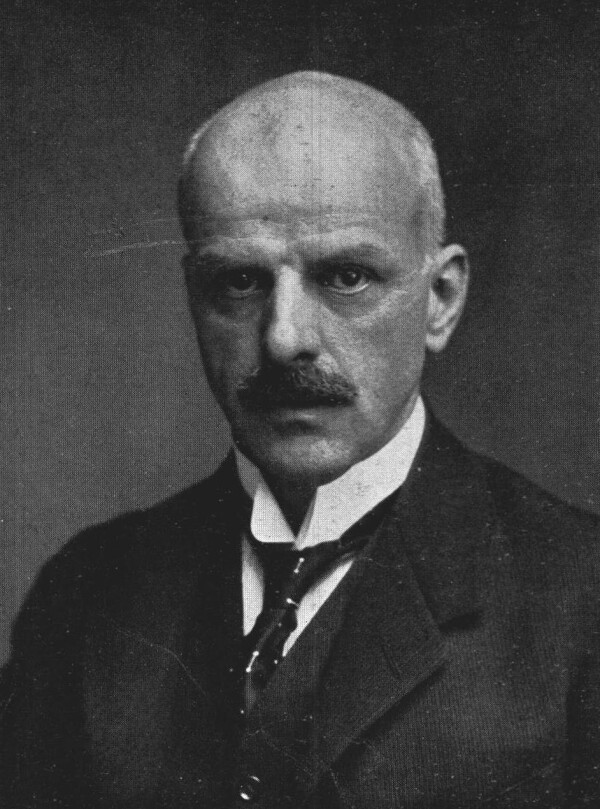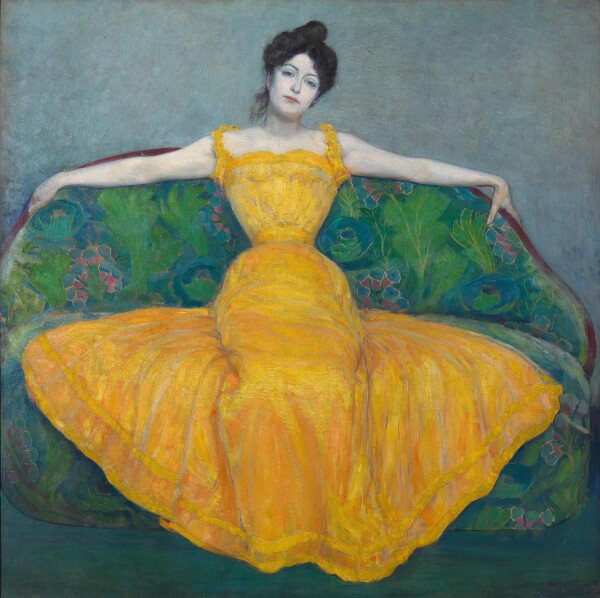Max Kurzweil

Max Kurzweil, in: Der Architekt. Wiener Monatshefte für Bau- und Raumkunst, 21. Jg. (1916/18).
© ANNO | Austrian National Library
The painter and graphic artist Maximilian “Max” Kurzweil was a founding member of the Vienna Secession and especially committed to the Secession’s magazine Ver Sacrum. He resigned as a member in 1905. He later held a teaching position at the Vienna Art School for Girls and Women and worked as a war painter.
Maximilian “Max” Kurzweil was born in Bisenz in Moravia (now Bzenec, Czech Republic) in 1867. He studied at the Vienna Academy of Fine Arts from 1886 to 1892 and then, for two years, at the Académie Julian in Paris, where he made his debut at the Salon of the Société des Artistes Français. During this period, the artist often spent time in Brittany, where he met his wife. He returned to Vienna in 1894 and completed his studies. Just one year later, Kurzweil became a full member of the Cooperative of Visual Artists in Vienna (Künstlerhaus).
Kurzweil at the Vienna Secession
Kurzweil left the Vienna Künstlerhaus in 1897 and instead joined the newly founded Association of Austrian Artists Secession. Over the next few years, he worked primarily as an editor and printmaker for the in-house magazine Ver Sacrum. He also designed the exhibition poster for the “XVII. Ausstellung der Vereinigung bildender Künstler Österreichs” [“17th Exhibition of the Association of Austrian Artists”], which took place in spring 1903. Due to internal differences, Max Kurzweil and the Klimt Group left the association in 1905.

Max Kurzweil: Lady in Yellow, 1899, Wien Museum
© Wien Museum
A Journey to Italy and More Exhibitions
Shortly afterwards, Kurzweil traveled to Tuscany and for a year moved into a studio of the Union of German Artists at the Villa Romana near Florence. This had been made possible by Gustav Klimt, who had been awarded a prize in the “II. Ausstellung des Deutschen Künstlerbundes” [“2nd Exhibition of the Union of German Artists”] in 1905 in the form of a one-year study visit to Italy, but waived it in Kurzweil’s favor.
After 1905, Kurzweil only rarely took part in exhibitions, such as the “Kunstschau Wien” 1908 and the “Internationale Kunstschau Wien” 1909. One of his last major public appearances took place at Galerie Miethke in 1911, where he presented numerous portraits and landscapes together with his painter friend Carl Moll.
Teaching and End of an Artist’s Career
Max Kurzweil taught at the Vienna Art School for Girls and Women between 1909 and 1915, where he led the course “Drawing and Painting from Life” and the “Nude Drawing Evening Class.” During World War I he worked as a war painter. He committed suicide in 1916.
Literature and sources
- Brief von Max Klinger in Florenz an Carl Moll (01.11.1905).
- Brief von Gustav Klimt in Wien an Maximilian Kurzweil (1901). Autogr. 494/35-1.
- Felix Czeike (Hg.): Historisches Lexikon Wien, Band 3, Vienna 1994, S. 650-651.
- Österreichische Akademie der Wissenschaften (Hg.): Österreichisches Biographisches Lexikon 1815–1950, Band 4, Vienna 1993.
- Carl Moll: Max Kurzweil. Ein Wort der Erinnerung von Karl Moll, in: Der Architekt. Wiener Monatshefte für Bau- und Raumkunst, 21. Jg. (1916/18), S. 13-16.
- Hans Vollmer (Hg.): Allgemeines Lexikon der Bildenden Künstler von der Antike bis zur Gegenwart. Begründet von Ulrich Thieme und Felix Becker, Band XXII, Leipzig 1928, S. 139-140.
- Walter de Gruyter (Hg.): Allgemeines Künstler-Lexikon. Die bildenden Künstler aller Zeiten und Völker, Band LXXXII, Berlin 2014, S. 340.
- Agnes Arco-Husslein, Markus Fellinger (Hg.): Max Kurzweil - Licht und Schatten, Ausst.-Kat., Upper Belvedere (Vienna), 11.05.2016–04.09.2016, Vienna 2016.

